You'll find three reliable ways to heat food outdoors: open fire cooking, portable camp stoves, and earth ovens. With open fire cooking, you can use white-hot coals and metal racks to create a stable cooking surface that reaches temperatures up to 700°F. Portable camp stoves offer convenience with options like propane, wood-burning, or alcohol-fueled models that provide controlled heat output. For longer cooking sessions, you can build an earth oven by digging a pit, lining it with rocks, and creating a sealed dome that retains heat for up to six hours. Each method has unique advantages that'll enhance your outdoor cooking experience.
Open Fire Cooking Basics
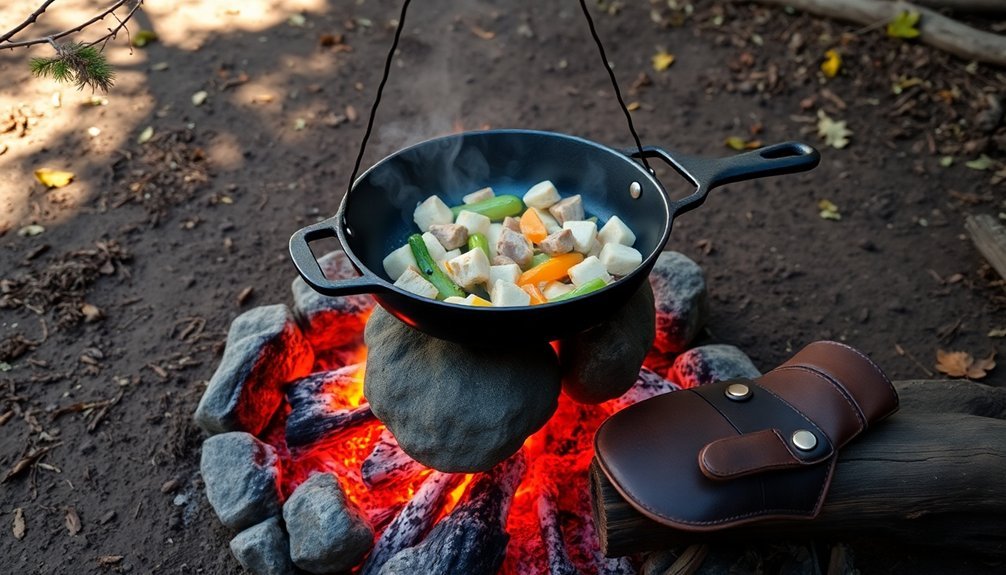
Mastering open fire cooking starts with understanding the basics of fire management and setup. You'll want to build your fire using dry, seasoned wood, starting small with kindling before adding larger logs.
Once the flames die down, white coals provide the best cooking heat. The temperature should range from 225 to 700°F depending on your cooking method and food type.
Set up your cooking station by positioning a metal rack over the fire or using stones to create a stable cooking surface. You can also nestle pots directly into the embers.
Cast iron cookware works best for open-fire cooking due to its heat tolerance. If you're grilling directly over flames, position your grate on rocks or wetted green logs for stability.
Control your heat by banking coals and using a spray bottle to manage flare-ups. For consistent cooking, distribute wood evenly and rotate your food regularly.
Portable Camp Stove Solutions
Modern portable camp stoves offer versatile solutions for outdoor cooking, ranging from wood-burning units to propane-powered models.
You'll find innovative options like the BioLite CampStove 2+, which converts heat into electricity while minimizing smoke through advanced combustion technology. Its 3,200 mAh battery can even charge your devices via USB.
For fuel efficiency, consider rocket stoves that cook with just a few twigs, or lightweight alcohol and candle stoves perfect for backpacking. Having multiple fuel options helps ensure you'll always have a way to cook during emergencies.
If you prefer traditional fuel sources, the Freespirit Recreation 2-burner propane stove delivers 16,000 BTU/hr with convenient push-button ignition.
For maximum flexibility, the Barebones Portable Camp Stove accepts wood, coal, or pellets and supports heavy cookware like cast iron. It packs flat and assembles quickly, making it ideal for diverse outdoor cooking needs.
Earth Oven Methods
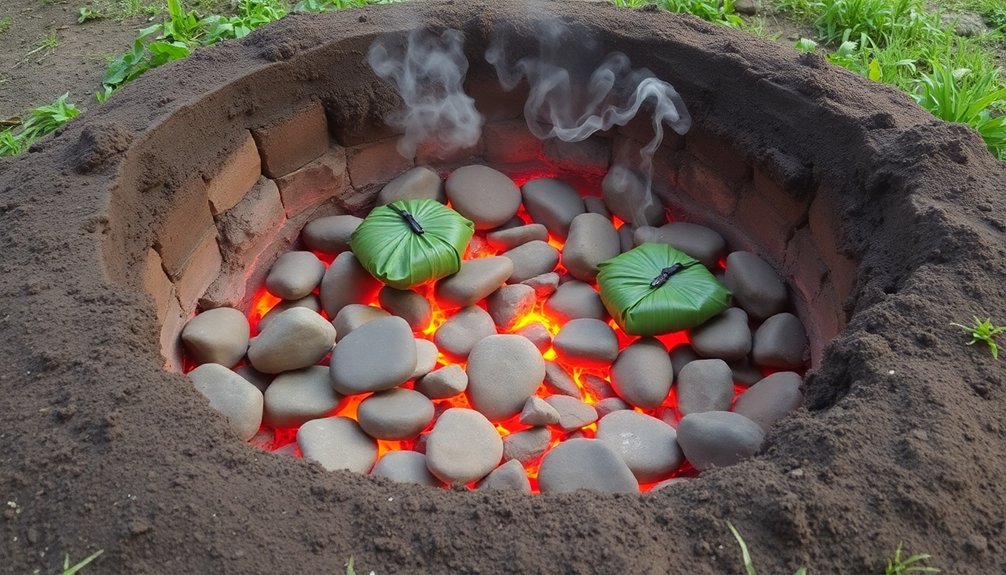
While ancient civilizations pioneered earth oven cooking, this traditional method remains one of the most efficient ways to prepare food outdoors. Two hours of cooking is typically sufficient for most dishes prepared using this method.
You'll start by digging a two-foot-wide pit, lining it with rocks and gravel for insulation. After creating a stable dome using wedge-shaped rocks, you can cook multiple items for up to six hours while using minimal firewood.
To achieve the best results with your earth oven:
- Layer the bottom with flat rocks and gravel to improve heat retention
- Place food on edible leaves and sprinkle with water to generate steam
- Cover the oven completely with soil to seal in heat and moisture
You'll find this method not only preserves natural flavors but also requires minimal supervision while cooking meats, fish, and vegetables to perfection.
Frequently Asked Questions
How Long Can Tea Lights Safely Burn in a DIY Slow Cooker?
You can safely use tea lights for 3-10 hours in your DIY slow cooker, but don't leave them unattended. You'll want proper ventilation and a non-flammable surface to prevent fire hazards.
Can Volcanic Rocks Be Used Instead of Regular Stones for Heating?
Yes, you'll find volcanic rocks are safer and more effective than regular stones for heating. They retain heat longer, won't explode like sedimentary rocks, and provide smoke-free, efficient heat for your cooking needs.
What Materials Make the Best Emergency Insulation for Keeping Food Warm?
You'll get the best insulation by combining multiple layers of aluminum foil with thick towels or blankets. Add a cooler or insulated container for maximum heat retention, and you'll keep food warm longer.
How Do Different Types of Wood Smoke Affect Food Flavor?
You'll find different woods create unique flavors: hickory gives a strong bacon taste, applewood adds subtle sweetness, oak provides balanced smoke, while mesquite delivers intense earthiness. Choose based on your meat type.
What's the Minimum Safe Distance Between Cooking Areas and Camping Tents?
You'll need to keep cooking areas at least 100 feet from sleeping tents for general safety, and maintain a minimum of 19.7 feet (6 metres) between cooking tents and other tents to prevent fire spread.
In Summary
Whether you're using an open fire, camp stove, or earth oven, you've now got multiple ways to prepare hot meals in the great outdoors. Don't let the lack of a kitchen stop you from enjoying warm, delicious food during your adventures. Remember to always prioritize safety, maintain your equipment, and practice these methods before relying on them in actual outdoor situations.

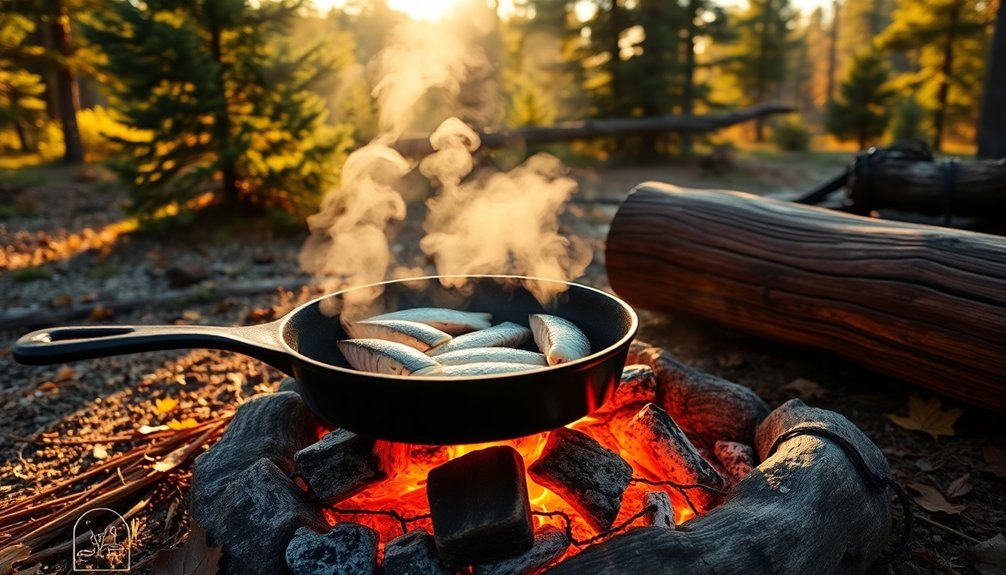

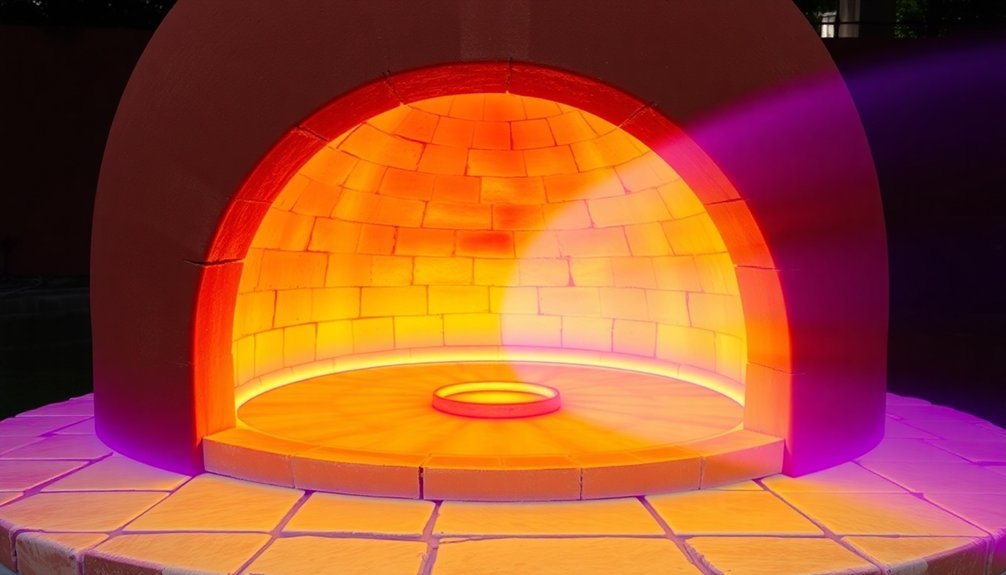
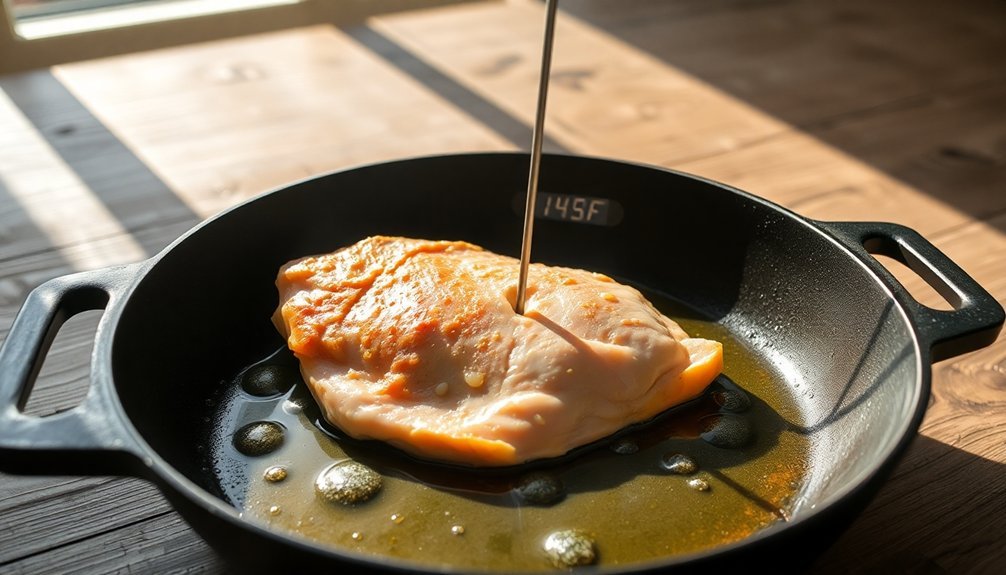
Leave a Reply